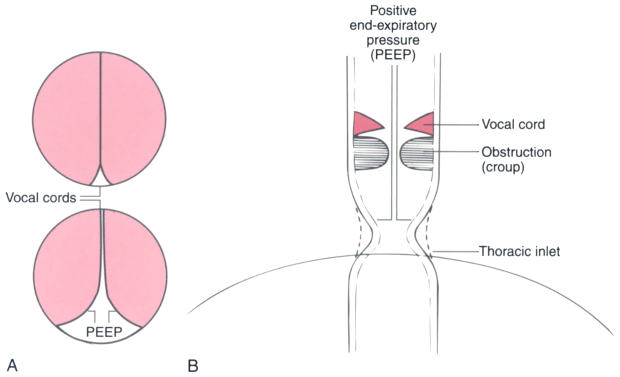Figure 60-12
When a child has upper airway obstruction caused by laryngospasm
(A) or mechanical obstruction (B),
the application of approximately 10 cm H2
O of positive end-expiratory
pressure (PEEP) during spontaneous breathing often relieves the obstruction. That
is, PEEP helps keep the vocal cords apart (A) and
the airway open (B, broken lines).
If this simple maneuver does not relieve the obstruction, more vigorous positive-pressure
ventilation may be necessary. Airway obstruction caused by the tongue requires insertion
of an appropriately sized oral airway. (Redrawn with modification from Coté
CJ, Todres ID: The pediatric airway. In Coté
CJ, Ryan JF, Todres ID, et al [eds]: A Practice of Anesthesia for Infants and Children.
Philadelphia, WB Saunders, 1992, p 55.)

